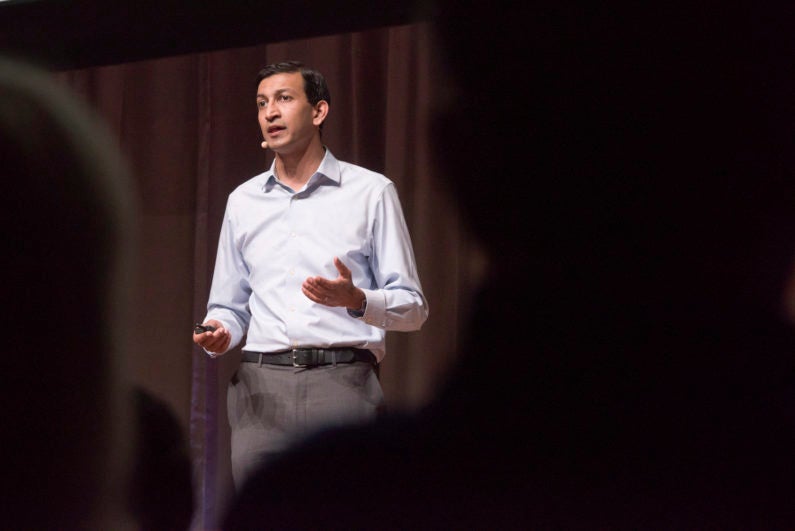Stanford Center on Poverty and Inequality to lead program to measure success of social programs
A White House-sponsored $1.5 million grant was awarded to the Stanford Center on Poverty and Inequality and Third Sector Capital Partners.
The White House announced last week a grant to the Stanford Center on Poverty and Inequality and Third Sector Capital Partners to help build a framework for measuring and evaluating the success of social service programs designed to reduce poverty and inequality.

Economist Raj Chetty is one of the principal investigators on a project that aims to build a framework for evaluating the success of social service programs designed to reduce poverty and inequality. (Image credit: Tamer Shabani)
The Corporation for National and Community Service’s Social Innovation Fund (SIF) grant, a key White House initiative established in 2009, was announced Thursday in conjunction with an event on innovation featuring President Barack Obama in Pittsburgh.
Stanford economist Raj Chetty, who is one of the principal investigators for the $3 million project, emphasized the importance of harnessing the power of big data to reduce poverty and increase opportunity.
“If we hope to secure the core American principle of equal opportunity, we need rigorous evidence-based innovation,” said Chetty, professor of economics. “We are committed to building an infrastructure that will allow us to make smart investments in data-based solutions.”
The $1.5 million SIF grant, which will be matched by a $1.5 million contribution from The Ballmer Group, will go toward creating a new infrastructure that links administrative tax data with Census data, allowing social policy innovators to avoid the problems that plague survey-based assessments. In collaboration with researchers at the Center on Poverty and Inequality, service providers will be able to monitor the immediate and long-term effects of their programs and the impacts on children.
“Science and technology can do more than just grow the economy,” said David Grusky, professor of sociology and the center’s director. Grusky is also a principal investigator for the new grant.
“It can also give us big-data tools, a commitment to rapid testing and results-based policy and, perhaps most importantly, a new entrepreneurial spirit to the problem of reducing poverty. At Stanford University, that’s exactly what the Center on Poverty and Inequality is doing. It’s bringing together the country’s best minds in science, technology, service and government to build a 21st-century infrastructure for taking on poverty, reducing inequality and increasing mobility,” he said.
In addition to building out the new infrastructure for measuring results, the Center on Poverty and Inequality will partner with Third Sector, a nonprofit group of social-impact investors and philanthropists, to hold an open competition to select three Pay for Success providers to focus on projects that provide economic opportunity and require training and technical assistance to centralize their administrative data functions.
Pay for Success is a contracting model that provides government funds toward innovative social services programs if they deliver their stated outcomes. Private investors finance the upfront costs of service delivery, and the government repays the investor if the project achieves positive outcomes. This spreads the risk between government and the private sector and protects taxpayers from paying for programs that don’t work.
“Stanford and Third Sector have been selected to do groundbreaking work, helping communities use data and implement better, more effective solutions,” said David Wilkinson, director of the White House Office of Social Innovation and Civic Participation. “The White House applauds the Stanford Center on Poverty and Inequality, Third Sector and CNCS’s Social Innovation Fund for advancing innovative approaches to measurably improve opportunity and equality.”
The Center on Poverty and Inequality and Third Sector will focus primarily on funding Pay for Success projects in California, Oregon and Washington. California has a particularly pressing need for Pay for Success projects because it has a Supplemental Poverty Measure rate of 21 percent, which is the highest in the country. The rate is an economic indicator that incorporates tax payments, cost of housing and other Census statistics.
